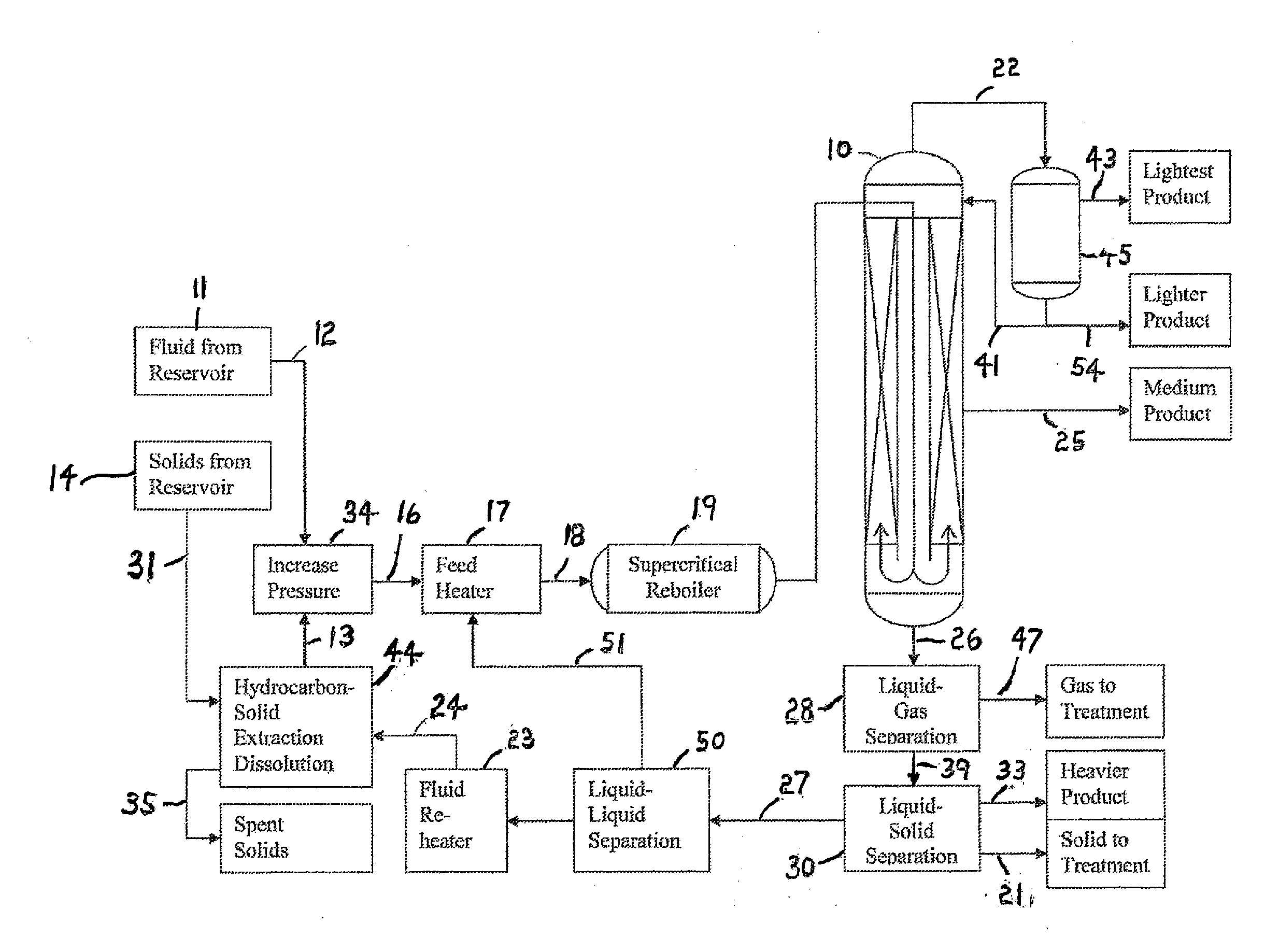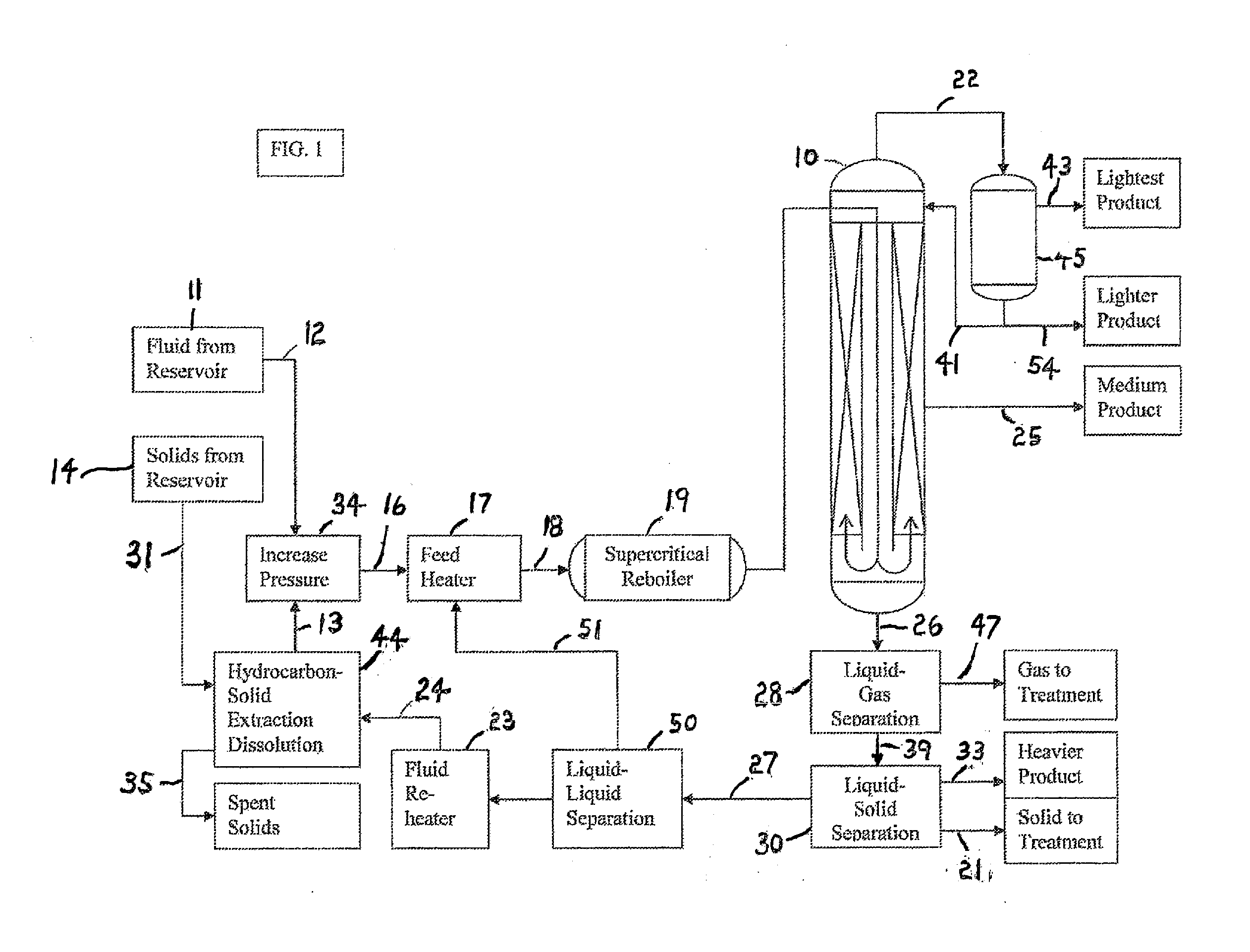Using supercritical fluids to refine hydrocarbons
a technology of supercritical fluids and hydrocarbons, applied in the direction of sustainable manufacturing/processing, separation processes, bulk chemical production, etc., can solve the problems of difficult to find and develop readily available medium to light crude oil reserves, difficult to know techniques, and complex equipment, etc., to enhance process operators' safety, reduce processing complexity, and improve process control
- Summary
- Abstract
- Description
- Claims
- Application Information
AI Technical Summary
Benefits of technology
Problems solved by technology
Method used
Image
Examples
Embodiment Construction
[0039]“Heavy oil” is a hydrocarbon with American Petroleum Institute (API) gravity lower than 20 degrees. It often contains sulfur compounds, corrosive components such as naphthenic acid, and associated heavy metals that are removed as part of the upgrading process. “Bitumen” and “bitumen-like” are defined as a hydrocarbon with a viscosity greater than 1000 cp at standard temperature and pressure. Supercritical fluids or fluid mixtures (typically aqueous) in a reactor portion of the system or method of the invention extracts the heavy oil / bitumen from a solid, then thermally splits the higher molecular weight hydrocarbons into lighter, more volatile hydrocarbons of higher value. The reaction portion of the system and method delivers the lighter weight, volatile hydrocarbons to a contacting portion of the system and method which uses a thermal or pressure gradient, and multi-phase contact or thermal or momentum diffusion, to separate the hydrocarbon mixture into portions that are via...
PUM
| Property | Measurement | Unit |
|---|---|---|
| temperature | aaaaa | aaaaa |
| temperature | aaaaa | aaaaa |
| pressure | aaaaa | aaaaa |
Abstract
Description
Claims
Application Information
 Login to View More
Login to View More - R&D
- Intellectual Property
- Life Sciences
- Materials
- Tech Scout
- Unparalleled Data Quality
- Higher Quality Content
- 60% Fewer Hallucinations
Browse by: Latest US Patents, China's latest patents, Technical Efficacy Thesaurus, Application Domain, Technology Topic, Popular Technical Reports.
© 2025 PatSnap. All rights reserved.Legal|Privacy policy|Modern Slavery Act Transparency Statement|Sitemap|About US| Contact US: help@patsnap.com



